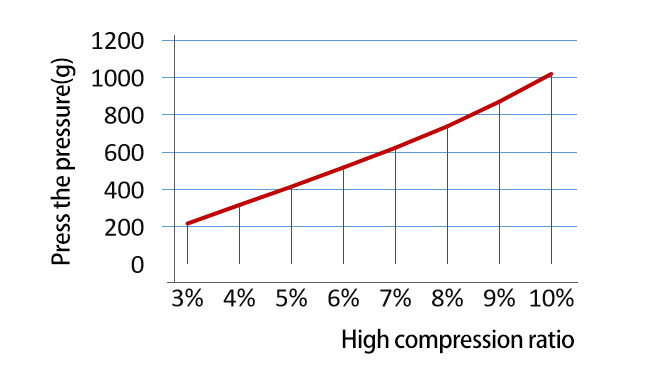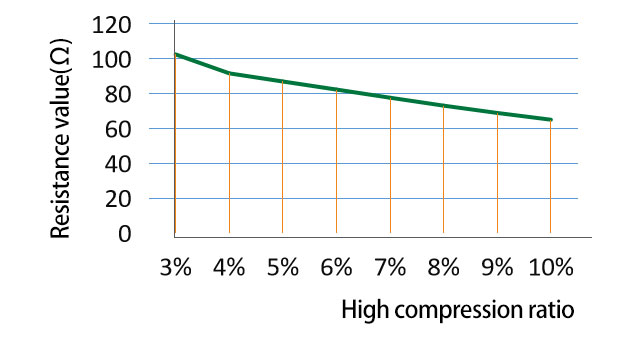YCD/YCS Type Zebra Strip Connectors
YCD type zebra strip connectors are supported by insulating silicone rubber on both sides of the fully conductive layer, which can meet applications with demanding insulation requirements.
At the same time, because the insulation layer is softer than the fully conductive layer, good contact performance can be achieved in practical applications with only a small compressive force.
YCD type conductive rubber connector insulation lining is silicone natural color (transparent), can also be made according to the requirements of white, green and other colors.
The structure of YCS type and YCD type is basically the same, but the insulation liner of YCS type has only one side, while the insulation liner of YCD type is two sides.
- YCD – double-sided sandwich conductive strip
- YCS – single-sided sandwich conductive strip
Zebra Strip Connectors Naming Conventions
To ensure that conductive rubber connectors are made correctly, the naming conventions are as follows:
Preload relationship and curve
The superior elasticity of zebra strip connectors can effectively avoid the risk of good contact with components due to aging deformation and accidental drop of structural parts during the use of electronic equipment, but with the deformation of structural parts and the change of compression force, the compression ratio and resistance of conductive rubber connectors will also change, and it is necessary to fully consider when setting structural parts and zebra strip connectors. As follows:


The calculation of conductive rubber connector resistance can be referenced by the following formula:
R = Resistance value (Ω)
CW = Conductive width (mm)
L = Conductive length (mm)
H = Conductive height (mm)
ρ = volume resistivity (Ω·cm)
The calculation of the compressive force of a conductive rubber connector can be calculated by reference to the following formula:
F = Compressive force (g)
D = Compression ratio D = (H-H1) ÷ H
E0 = Fully conductive layer modulus of elasticity 3.5MPa
E1 = Modulus of elasticity of the insulation liner 1.1MPa
H = Conductive rubber connector height (mm)
W = Conductive rubber connector width (mm)
CW = Fully conductive layer width (mm)
W1 = Insulation liner width (mm) W2 = W-W1
L = Conductive rubber connector length (mm)
Structure and electrical performance data
Implementation standard: GB2439, GB/T528
| Project | Specification values | ||
| Material | Conductive layer | Insulating lining | |
| Conductive silicone rubber | Silastic | ||
| Routine | Low resistance | Routine | |
| Hardness(A) | 65±5 | 70±5 | 30±5 |
| Volume resistivity(Ω·cm) | <6 | <3 | >1012 |
| Tensile strength(mPa) | >4 | >5 | >4 |
| Elongation(%) | >100 | >150 | >300 |
| Tear strength(N/mm) | >8 | >12 | >12 |
| Color | Black | Transparent/white | |
Work environment data
| Operating temperature | Operating humidity(%)25℃ | Maximum current used (mA/mm2) | |
| Minimum | Maximun | ||
| -50 | 150 | 85 | 2.5 |